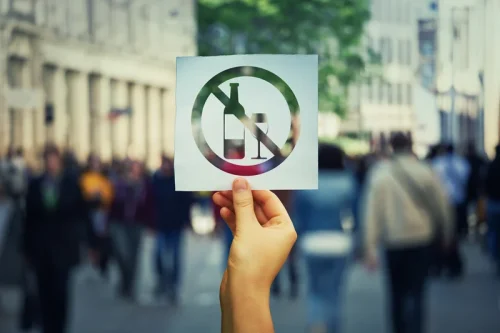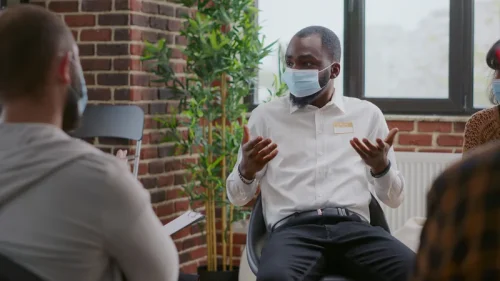
In early recovery, boredom and social isolation can be powerful triggers for relapse. When feeling bored, individuals may be more likely to seek out activities or substances that provide temporary relief or excitement, leading to a return to addictive behaviors. “Triggered” has taken on several new meanings in recent years, leading to a lot of confusion about what it actually means. For people who’ve experienced trauma, being triggered is a very real and concerning phenomenon. And while it may not be someone’s intention, using the term to refer to someone they believe is being very emotional or sensitive only adds to the stigma surrounding mental health. Therapists experienced in substance use disorders can help you identify and analyze possible triggers.
Preventing a Relapse with Agape Treatment Center

By Matthew Tull, PhDMatthew Tull, PhD is a professor of psychology at the University of Toledo, specializing in post-traumatic stress disorder. Even though it may sometimes feel like PTSD symptoms come out of the blue, PTSD symptoms rarely spontaneously occur. The same applies to other distractions like checking our phones too much, eating junk food, or excessive shopping. Addiction and substance use disorder affects over 17% of the American population.
Self-Awareness: A Key to Addressing Internal Triggers
Dr. Bricker advises writing down the trigger, whether or not you subsequently give in to the distraction. Triggers refer to the experience of having an emotional reaction to a disturbing topic (such as violence or the mention of suicide) in the media or a social setting. However, there is a difference between being triggered and being uncomfortable. After encountering a trigger, it can take some time for your nervous system to recover and return to baseline. This is partly because trauma reduces your window of tolerance — the emotional zone in which you feel grounded, balanced, and calm.
Have a support system

Your emotional reaction is so strong that you can’t problem-solve, and problems feel so big that there is no use in trying. Your first goal is to see the initial ball without all the negative memories, thoughts, and feelings it picked up along the way. Once you clearly see what started your emotional reaction, you can begin to figure out what to do next. For those struggling with substance abuse and addiction, it isn’t uncommon for the affected person to return to alcohol or drug use. About 40-60% of those struggling with addiction relapse following treatment.
The first step in healing triggers is being able to identify them, as well as internal beliefs. Remember that these are wounds, and approach them with compassion and tenderness. Depending upon what the trigger is, healing may involve the stages of grief and/or re-evaluating the context and validity of learned beliefs. In some cases, overreactions are learned behavior that was modeled by a parent. Some people catastrophize everything, creating constant melodrama and mountains out of molehills. They may have grown up living in a perpetual state of crisis, and although they claim to hate it, they repeatedly recreate their stressful childhood environment.


Part of treating conditions like PTSD and substance use disorders often involves working on ways to cope with triggers in helpful, productive ways. Triggers are anything that might cause a person to recall a traumatic experience they’ve had. For example, graphic images of violence might be a trigger for some people. You may have to try several strategies before finding what works best for you.
Mental Health Conditions Affected by Triggers
For example, placating an abuser invites more abuse, while setting effective boundaries diminishes it over time. In some cases, triggers are signs of danger that preceded an earlier wound. Sometimes these warnings are helpful, but when applied automatically to a different situation, our reactions can be dysfunctional. For example, dating someone who has wine with dinner might trigger an adult child of an alcoholic, who could become anxious and feel unsafe. Getting your “buttons” pushed or getting “triggered” can hurt or enrage us.
- The first step to managing distraction is to recognize that it starts from within.
- If you or a loved one has experienced a relapse, or are just considering treatment options, we are here to help you.
- Understanding internal triggers is not a straightforward process.
- Whether it’s an internal or an external trigger that prompts us, the resulting action is either aligned with our broader intention (traction), or misaligned (distraction).

Ask those you trust to help remove any triggers from your space, such as medication or alcohol bottles. Identifying your triggers is often the first step in learning how to cope with and manage them. However, learning the tools to cope with triggers is possible with the right support.
- Some, people struggling with drug and alcohol addiction feel as though they can’t mix and mingle without the use of substances.
- We also overreact when we’re reminded of an experience we’ve had with someone or something important in our past.
- Granted these feelings are positive, they can easily trigger relapses.
- If you’re not sure how to confront these situations, contact us today.
Avoiding external triggers may involve ending some past friendships. Recognize that these friendships are harmful to you and be sure to cut the friendship off completely; a half-way ending to a bad friendship will be much less likely to succeed. No doubt, these warnings may help certain people with PTSD, particularly if they’re in a vulnerable state what is internal trigger in that given moment. However, there is some debate on whether trigger warnings are ultimately helpful. Trigger warnings are designed to warn trauma survivors about potentially disturbing content. These warnings originated in online forums for survivors of sexual trauma, where individuals would warn other readers about the upcoming content.
Is Addiction Genetic?
If you have not been formally diagnosed with an anxiety disorder, a healthcare provider can assess your symptoms and determine the best treatment options for your particular situation. Whether trigger warnings are helpful or harmful is a subject of debate. Some use trigger warnings to give students time to physically or mentally prepare for potentially distressing subject matter, such as physical or sexual violence. Trigger warnings are used in other settings, too, such as in the media. What may be a normal, everyday situation or minor inconvenience for some may be triggering to someone living with mental illness. Triggers vary widely from person to person and can be internal or external.

